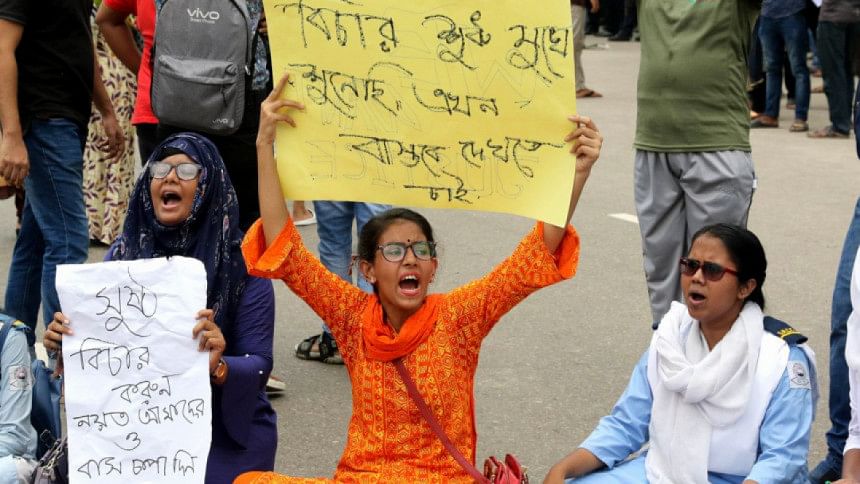Will the roadblocks to road safety ever be removed?

Five years ago, the government hurriedly enacted the Road Transport Act following an unprecedented road safety movement by school and college-goers after the deaths of two of students in Dhaka.
The law, with somewhat harsh punishments, appeared as a silver lining in the dark cloud of ceaseless road accidents in Bangladesh.
Unfortunately, hardly anything has changed. The country's roads and highways remain unsafe with indiscipline and chaos continuing to reign supreme, taking away precious lives every day.
According to Bangladesh Jatri Kalyan Samity, a passenger welfare platform, an average of 21 people died and 39 were injured daily in road accidents in Bangladesh from 2015 to 2022. At least 61,616 people were killed and 1.12 lakh injured in 44,171 road crashes in those eight years, it said.
This year alone, there have been 4,016 road crashes in which 3,727 people were killed and 5,781 injured, show data from Bangladesh Road Transport Authority. However, the actual number of fatalities is much higher, according to road safety campaigners, advocates and researchers.
Such a huge number of fatalities every year suggests that the law has failed to serve its intended purpose: ensuring road safety. One of the reasons is the lack of will on the government's part to enforce it. In fact, two laws – the Digital Security Bill and the Road Transport Bill -- were assented by the president on October 8, 2018. The DSA was enforced with immediate effect, but the Road Transport Act faced delays.
It took over four years for the government to frame the rules required to enforce the law. Although the rules were formulated in January this year, the government could not fully implement many of its provisions.
Then comes the lobbying power of bus and truck owners and operators. The transport owners' and workers' associations, controlled mainly by ruling party leaders, exert so much power and influence that the authorities concerned had to bow to their demands.
Soon after the passage of the act, we saw how the government withheld certain provisions because of the pressure from these groups. Numerous people fall victim to road crashes every day, but no one is held accountable. And it is because of the powerful associations that we see vehicles without fitness and route permits plying the roads, and reckless drivers continuing to enjoy impunity. They even force the government to change decisions if those go against them. The latest case of U-turn, from setting economic life of commercial vehicles to reduce road crashes and pollution, is the glaring example.
This begs a question: are the transport associations' interests bigger than peoples' lives? It is time that the government stops the bias towards the associations, and acts considering public safety at heart. Many more lives will be lost or scarred for life unless measures are taken to reverse the trend.

 For all latest news, follow The Daily Star's Google News channel.
For all latest news, follow The Daily Star's Google News channel. 



Comments